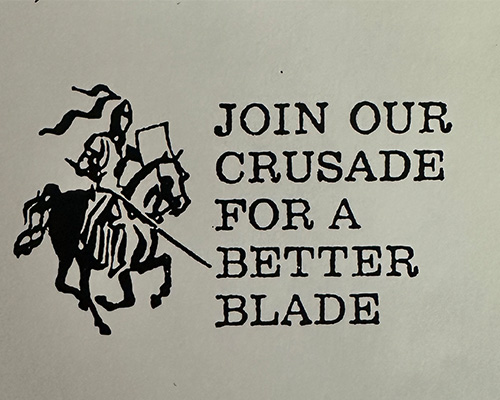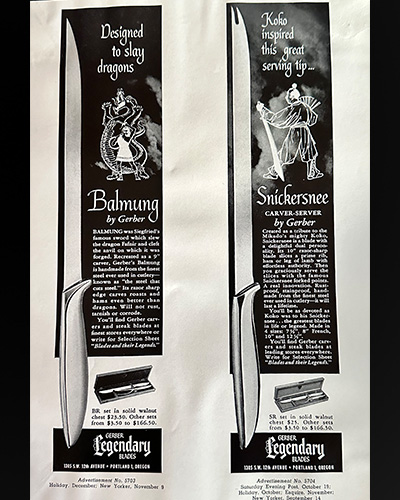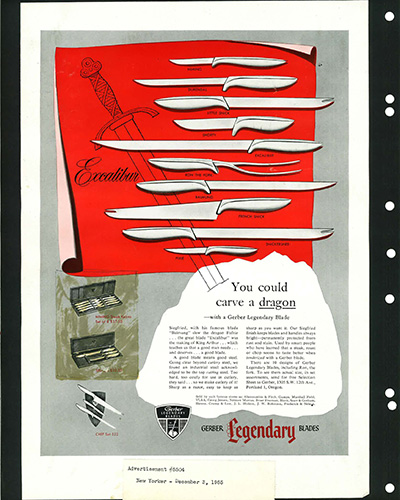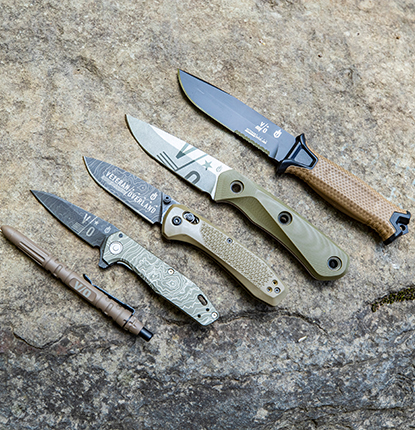What makes a legend? This is undoubtedly a question our founders, Pete, Joe, and Ham Gerber, must have asked themselves when they named Gerber Legendary Blades. As we’ve begun to celebrate our 85th anniversary, we’ve spent a lot of time in our archives, digging up old ads, letters, and, of course, some timeless early blades. And during our time in the archives, the term legend has appeared over and over again.
But where did the term legendary blades come from? Or the tagline From Fable to Table? Or the knife named Excalibur? While we don’t have the whole reasoning written down somewhere, it’s obvious that the story of King Arthur and the sword in the stone inspired it all.

There have been countless retellings of the story of King Arthur and his sword, Excalibur. But if you’re unfamiliar with this old legend, a quick explanation might help. In medieval times, a sword named Excalibur appeared in an anvil or stone in front of the footsteps of a church on Christmas Eve. Merlin proclaimed that whoever could pull this sword from the stone was the rightful and divine heir to the throne of England.
Many noblemen made the attempt but could not budge the sword. A teenage Arthur accidentally pulled the sword free. He would actually put it back and then do it again in front of a crowd to prove his feat true. And so, King Arthur became a legend known across the world. One that would inspire the Gerbers centuries later.
As we stated earlier, why King Arthur was the inspiration was unclear, but knowing Gerber’s background as an advertising agency makes perfect sense. They wanted a brand that could stand out, and that old myth was ideal for marketing and advertising, as well as naming blades and cutlery sets.

Ham Gerber takes credit for naming early knives and cutlery sets after legends and myths. One of the most famous knives was aptly named Excalibur. Still, others had legendary names, such as Balmung (Nordic Mythology) and Joyeuse (Charlamagne’s sword). Ham was clearly a fan of literature and mythology, as he would continue to name more and more knives after famous old swords and blades.

Even as Gerber grew across decades, Legendary Blades stuck around as a tagline and motif. In fact, when Gerber moved into the office and factory in 1965, they made a large sword that they would place into a rock by the front door every morning. Gerber is still in that same office space, and that rock is still there. The sword, however, has mysteriously disappeared from our workspace. Perhaps someone cast it into the depths of Lake Oswego.
Although “Legendary Blades” is no longer our tagline, the image of a sword in a stone has remained a part of the Gerber logo since 1939. Even today, if you look closely at our logo, you’ll notice a blade placed into a shield. Legends have always been at the forefront of everything we do at Gerber. After 85 years, we’ve established ourselves as a legendary brand. We’ve become companions to adventurers on their journeys, supporting them through their best and worst moments, much like Excalibur did with King Arthur.







I received a Legendary Blades Snickersnee carving set as a wedding present and still use it regularly 53 years later. It was one of the best gifts. I will always remember who gave it to us with great fondness. Still keep it in the very nice wooden box it came with. It still holds a nice sharp edge very well. I t makes any meat more tender as it just melts right through with clean cuts. The feel and balance is just right.
I have a Balmung, a French, and a Yan-su?, all three I picked up at a garage sale in near pristine condition. They are excellent kitchen knives and they have been incredibly easy to keep hair splitting sharp with just a regular bit of polishing.